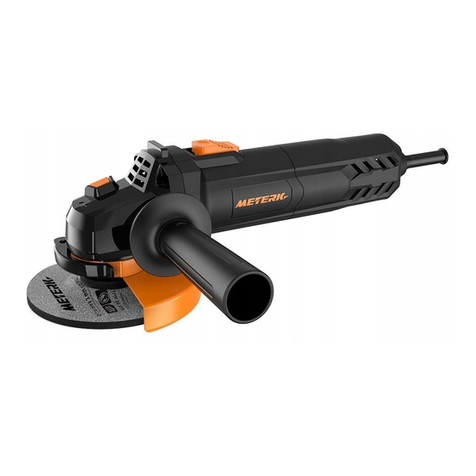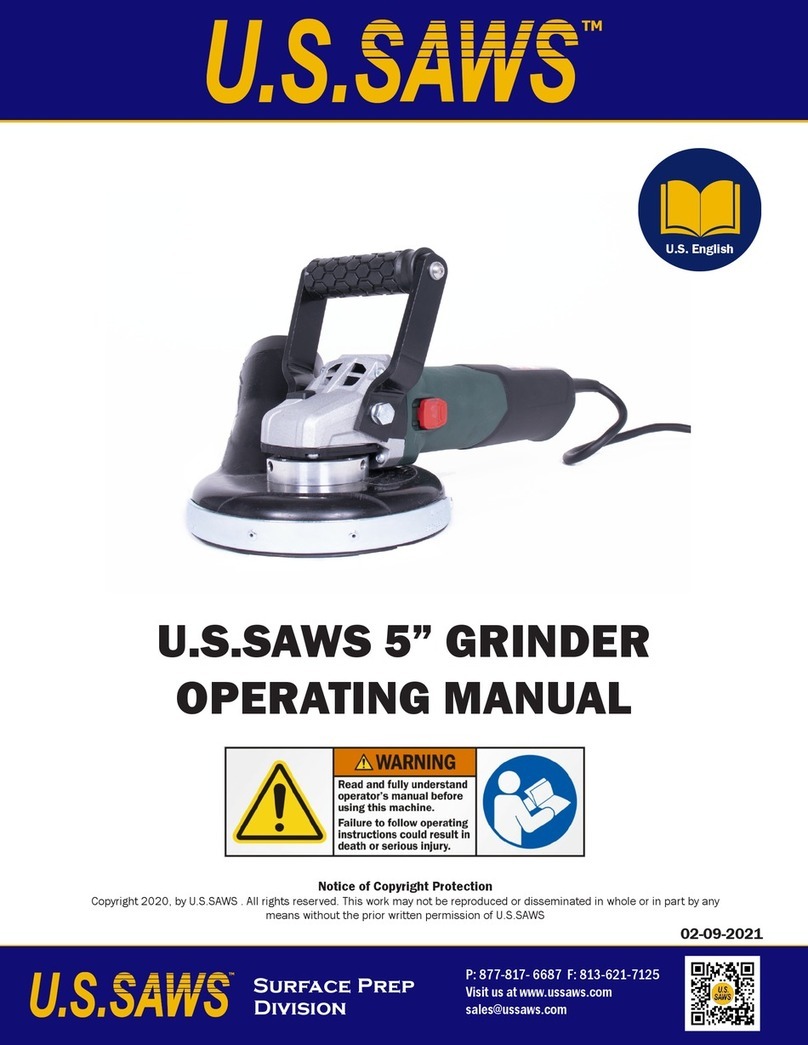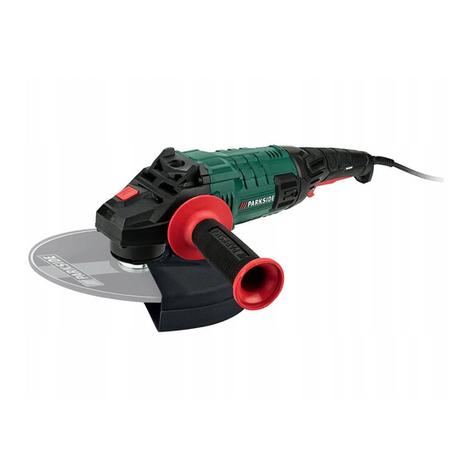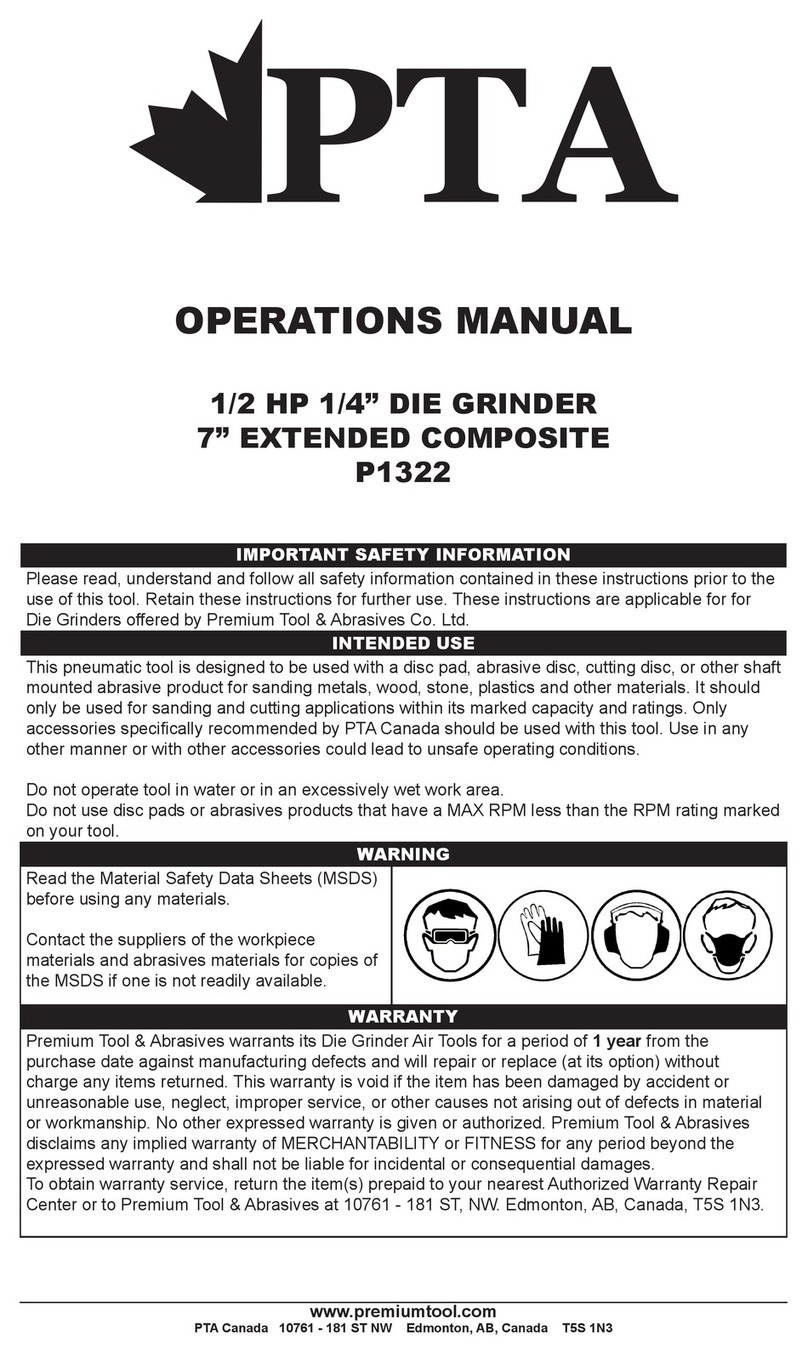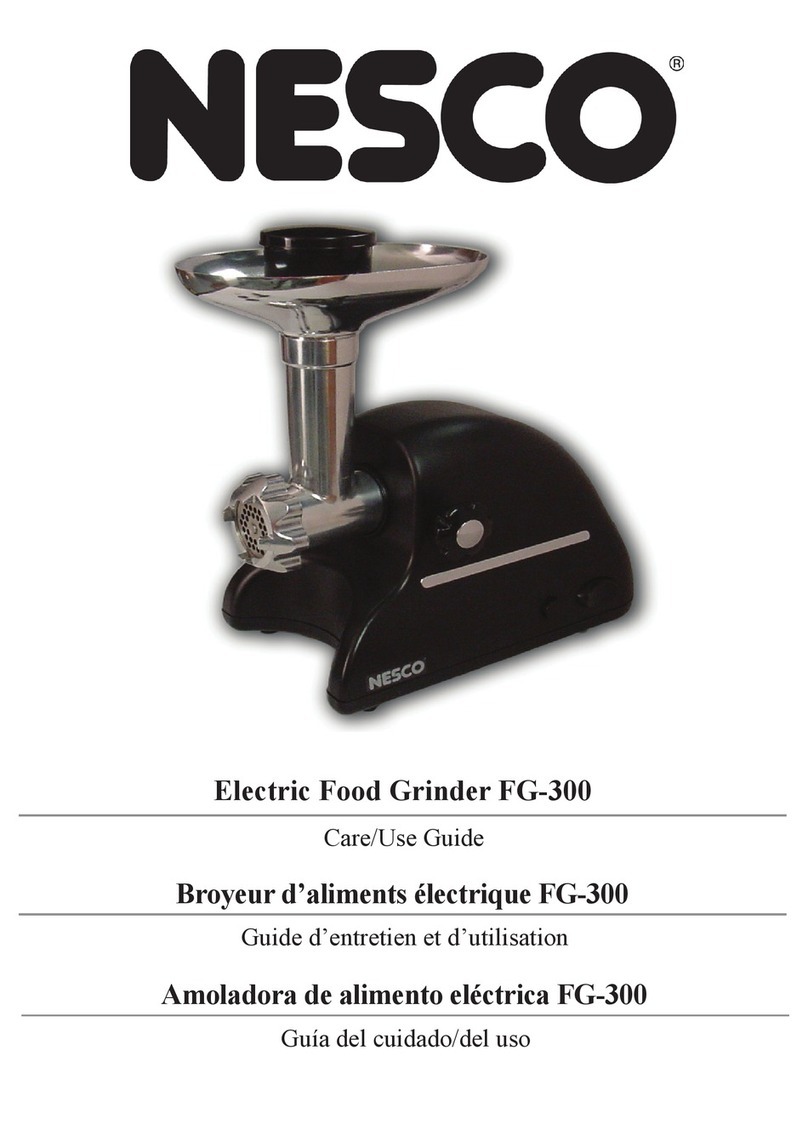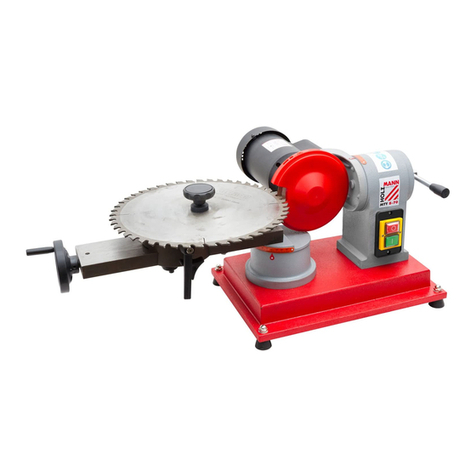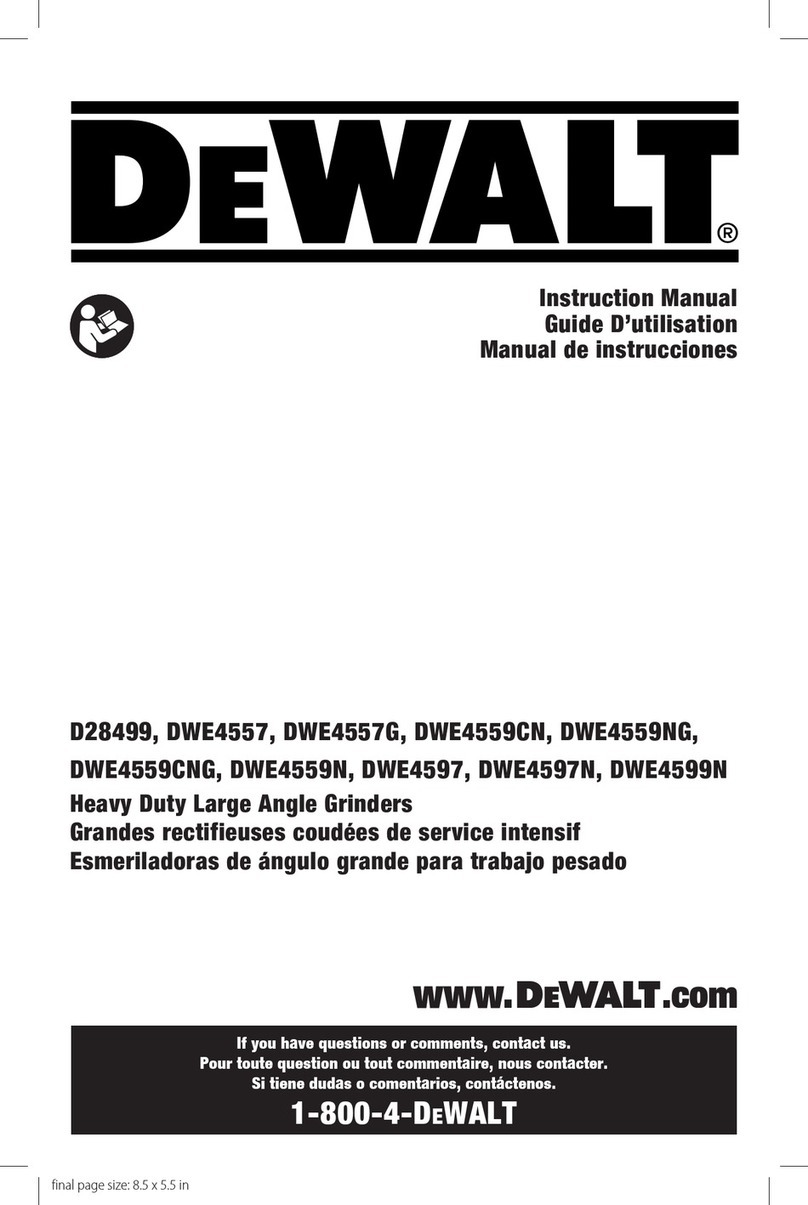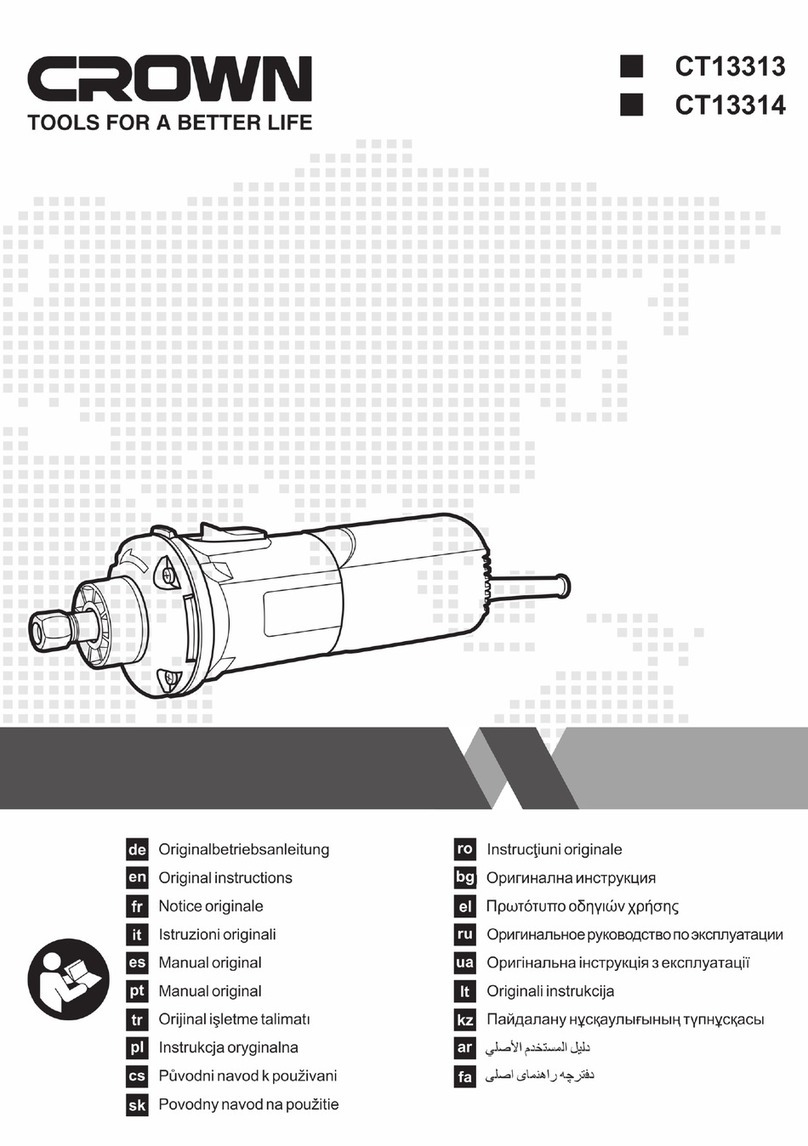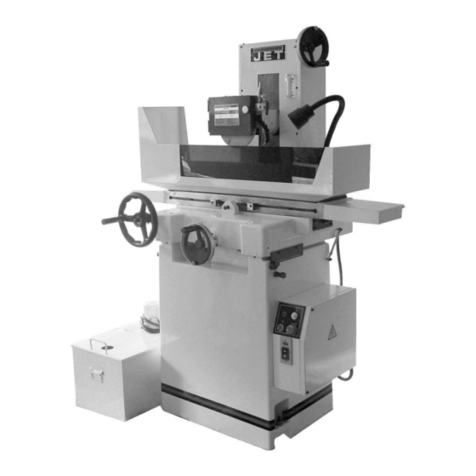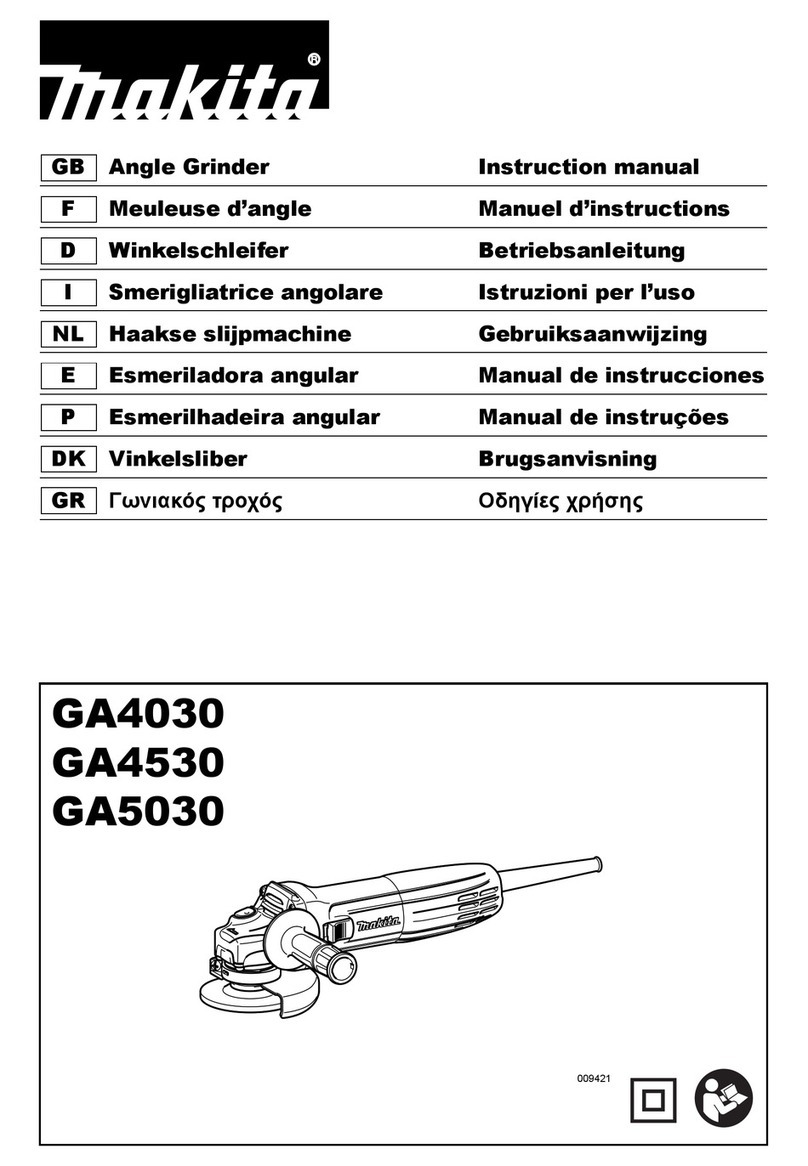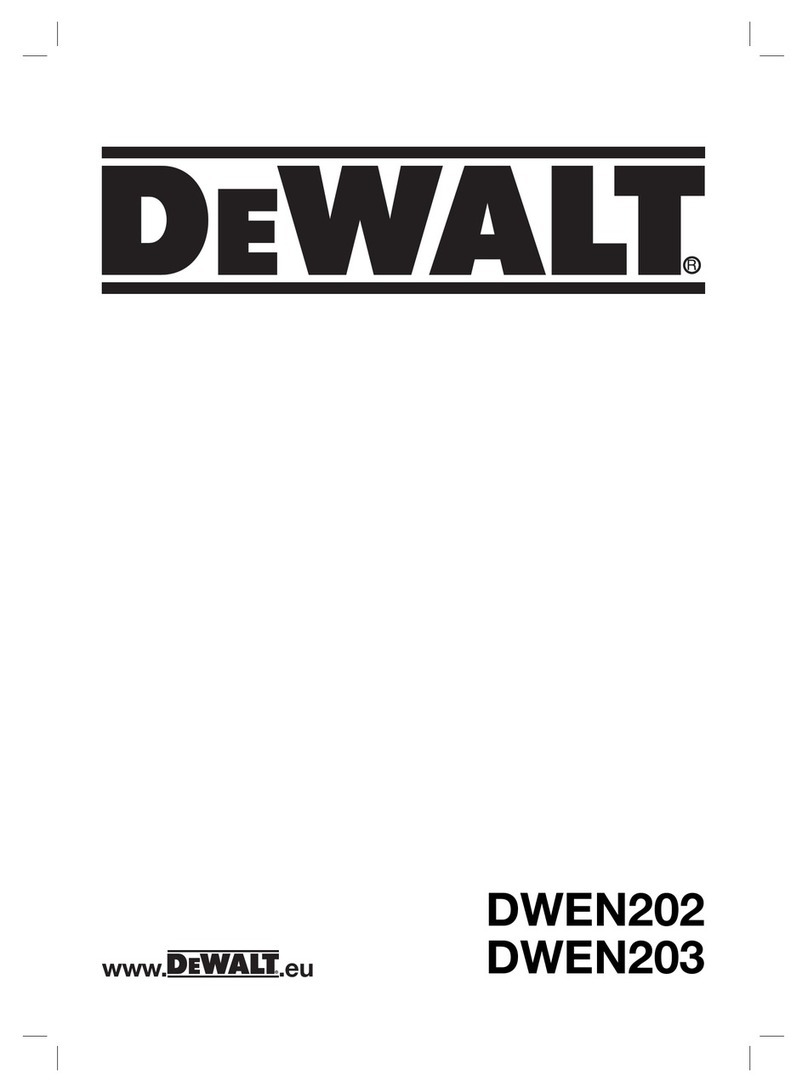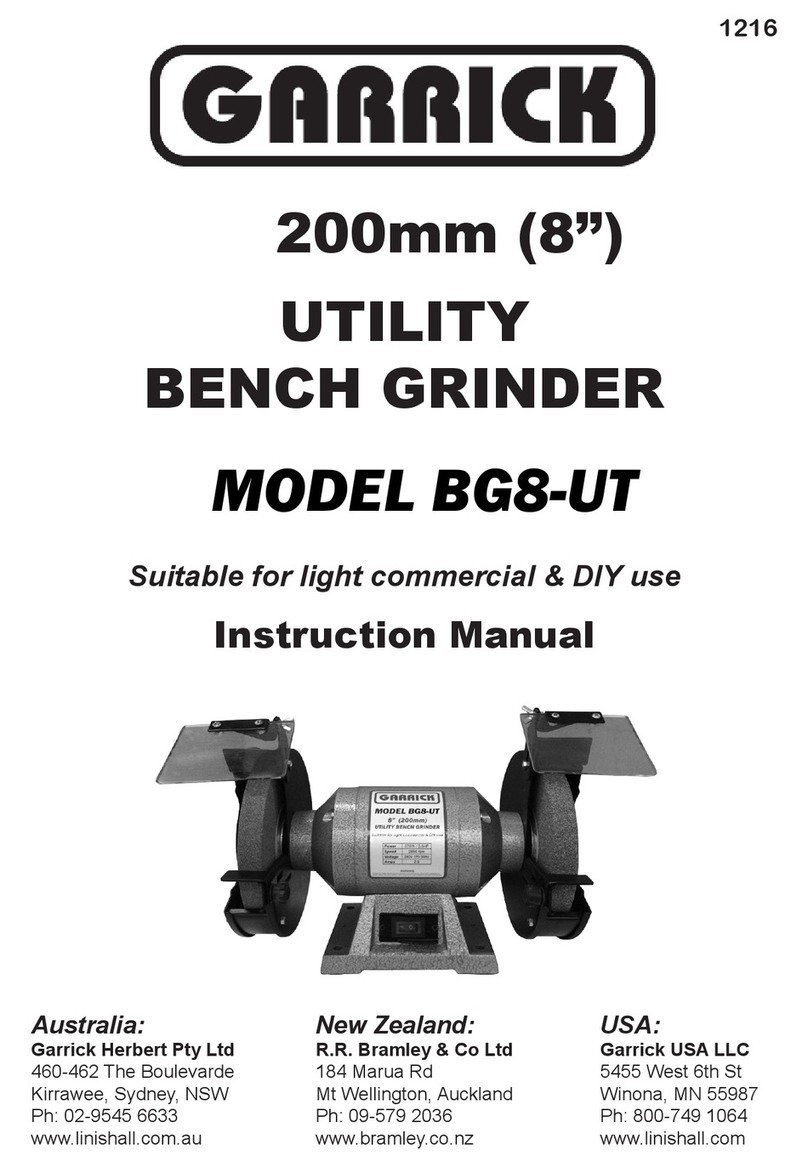
2
SAFETY INSTRUCTIONS
Safety Awareness Symbols
are inserted into this
manual to alert you to possible
Safety Hazards
.
Whenever you see these symbols, follow their
instructions.
The
Caution Symbol
identifies special instructions
or procedures which, if not correctly followed, could
result in damage to or destruction of equipment.
The
Warning Symbol
identifies special instructions
or procedures which, if not strictly observed, could
result in personal injury.
12. DON'T OVERREACH.
Keep proper footing and
balance at all times.
13. MAINTAIN GRINDER WITH CARE. Follow
instructions in Service Manual for lubrication and
preventive maintenance.
14. DISCONNECT POWER BEFORE SERVICING.
15. REDUCE THE RISK OF UNINTENTIONAL
STARTING. Make sure the switch is OFF before
plugging in the Grinder.
16. USE RECOMMENDED ACCESSORIES. Consult
the manual for recommended accessories. Using
improper accessories may cause risk of personal
injury.
17. CHECK DAMAGED PARTS. A guard or other
part that is damaged or will not perform its
intended function should be properly repaired or
replaced.
18. KNOW YOUR EQUIPMENT. Read this manual
carefully. Learn its application and limitations as
well as specific potential hazards.
19. KEEP ALL SAFETY DECALS CLEAN AND
LEGIBLE. If safety decals become damaged or
illegible for any reason, replace immediately. Refer
to replacement parts illustrations in Service
Manual for the proper location and part numbers
of safety decals.
20. DO NOT OPERATE THE GRINDER WHEN
UNDER THE INFLUENCE OF DRUGS,
ALCOHOL, OR MEDICATION
1. KEEP GUARDS IN PLACE and in working
order.
2. REMOVE WRENCHES AND OTHER
TOOLS.
3. KEEP WORK AREA CLEAN.
4. DON'T USE IN DANGEROUS ENVIRONMENT
.
Don't use Grinder in damp or wet locations.
Machine is for indoor use only. Keep work area
welllit.
5. KEEP ALL VISITORS AWAY
.
All visitors
should be kept a safe distance from work area.
6. MAKE WORK AREA CHILD-PROOF with
padlocks or master switches.
7. DON'T FORCE THE GRINDER. It will do the job
better and safer if used as specified in this
manual.
8. USE THE RIGHT TOOL. Don't force the Grinder
or an attachment to do a job for which it was not
designed.
9. WEAR PROPER APPAREL.
Wear no loose
clothing, gloves, neckties, or jewelry which may
get caught in moving parts. Nonslip footwear is
recommended. Wearprotectivehaircoveringto
contain long hair.
10. ALWAYS USE SAFETY GLASSES
.
11. SECURE YOUR WORK. Make certain that the
bedknife is securely fastened with the
electromagnets provided before operating.
